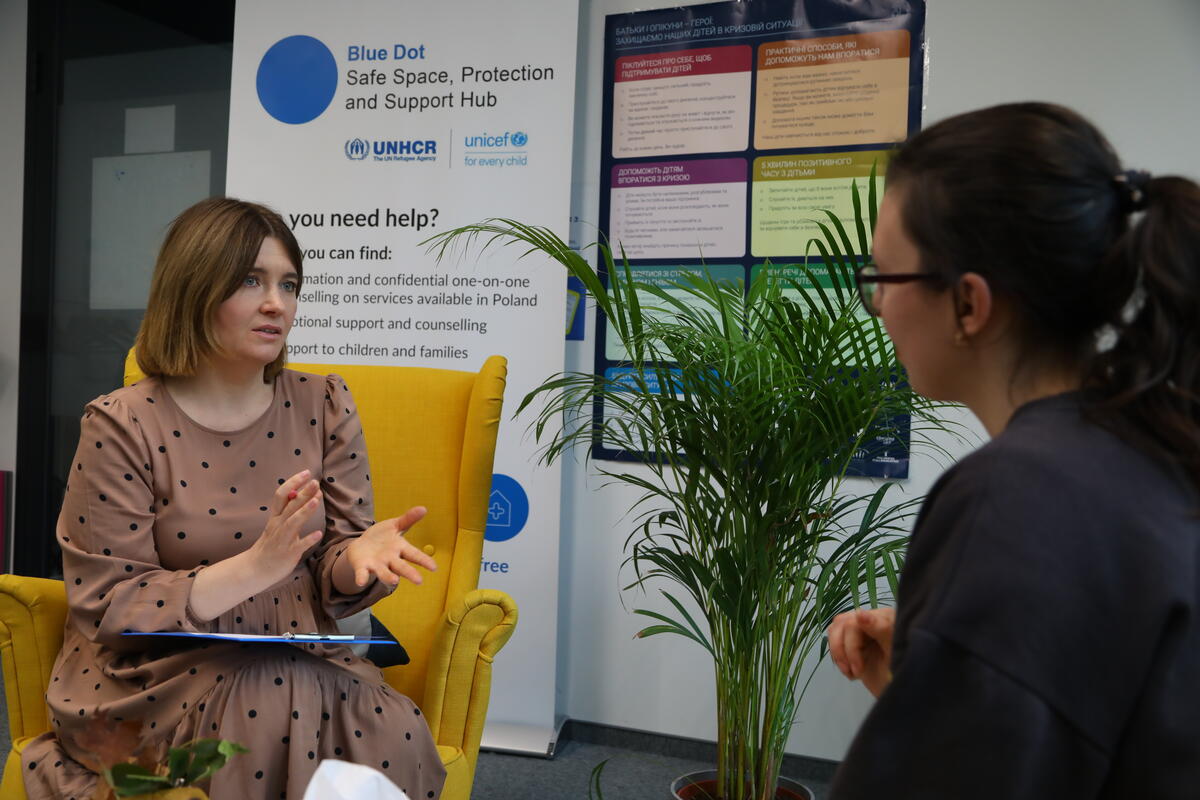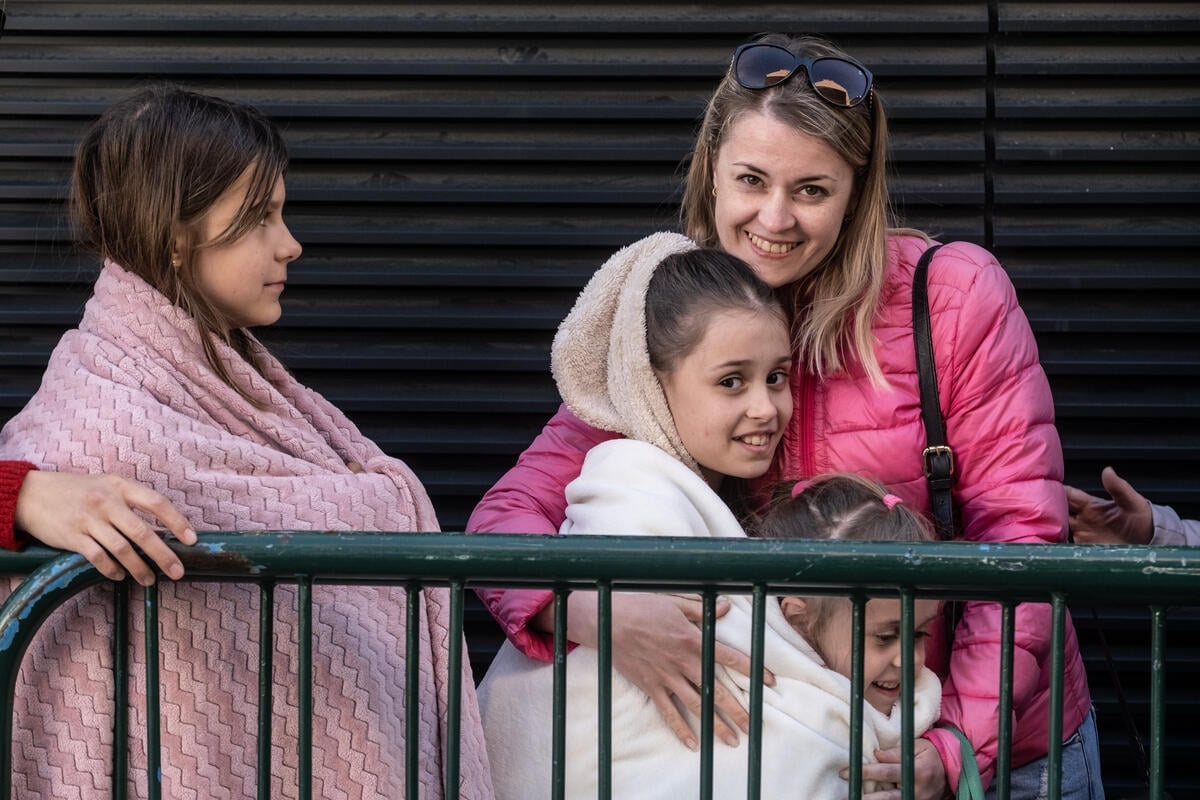Luhansk residents struggle to resume normal life after Ukraine conflict

Luhansk residents struggle to resume normal life after Ukraine conflict
Andrei Lubyanoy is raising his three young daughters alone, a noble task that is difficult under any circumstances. In the Luhansk region of eastern Ukraine, it is even more daunting.
During the 2014 hostilities, which cost thousands of lives and uprooted hundreds of thousands of people, his daughters Anya, 9, Yana, 11, and Rita, 13, nearly lost their father.
Armed fighters suspected Lubyanoy of being a spy and shot him in the legs during an interrogation, he said.
“No big deal, they healed,” Lubyanoy, 38, said with desperate optimism.
He makes less than US$50 a month doing odd jobs, and his daughters take turns to cook and look after the house and kitchen garden.
They are among thousands of families in the Luhansk region who need urgent help but whose entitlement to traditional humanitarian aid is unclear.
Half a million people fled the conflict in Luhansk, but some estimates say 150,000 have returned, mostly to their houses and apartments, which does not make them refugees as such.
“Many return as they cannot afford to pay their rent and cover daily expenses with pensions and benefits being suspended,” said Pablo Mateu, UNHCR's representative in Ukraine.
“Their lives were difficult before the conflict, and displacement has not made matters easier.”
Two years after the conflict began, and almost a year after an official ceasefire was announced, there is still sporadic shooting and killings on both sides.
The region suffers from marginalization since the collapse of coal mining and heavy industries, and soaring prices. Reminders of the conflict are everywhere.
Several military officers briefly occupied Lubyanoy’s run-down, two-room house in the village of Georgievka in August 2014, and before leaving they threw a grenade into the basement.
Shelling during armed clashes in the village damaged the roof, walls and windows.
Lubyanoy says he does not have the nerve to enter the living room, where the military men stayed, let alone renovate it.
He and his daughters huddle together in a tiny bedroom with two bunk beds and a small, antiquated television set.
UNHCR paid for the restoration of the roof and insulation of the walls before the onset of the autumn rains and winter storms.
“We don’t live, we survive."
However, the list of the family’s needs is still long. The girls have outgrown their winter clothes and they need stationery and textbooks for school.
Their mother left years before the large-scale flight of refugees from Luhansk and cannot be traced.
Rita risks losing sight in one of her eyes because of a childhood injury that was left untreated for years. However, her identity card was destroyed during the conflict and she cannot leave Luhansk even if there were a clinic that would treat her free of charge.
Asked whether the girls needed toys – they have a worn-out teddy bear and several old playthings – Yana replied: “We don’t need them. We’re grown up.”
Many older adults said they subsisted on meagre salaries or pensions and could not afford to repair their houses.
“We don’t live, we survive,” said Olga Bondarenko, 48, in her small house in the village of Khryaschevatoe, which was damaged during the August 2014 clashes.
UNHCR helped repair the roof of her house, but one of its three rooms is too badly damaged to be habitable, and her monthly salary of 2,400 roubles (US$37) is too small to pay for construction materials.
“With the cold season approaching, we see a need to scale up support for returnees and those living in villages close to the dividing line,” said UNHCR’s Mateu. “Despite all hardships, people show great resilience on both sides, trying to restore their damaged houses and rebuild their lives.”
Those who chose to stay in Luhansk, or who returned after fleeing temporarily to another part of Ukraine or to Russia, say this is where they belong.
“There is no place like home,” said Anjela Bulic, 22, an unemployed mother of three who shares a house in the village of Novosvetlovka with several other families and two goats.
Few people are strong and determined enough to rebuild their homes independently.
One of them is Alexander Solyanoy, 43, a doctor living in a rented apartment in Luhansk with his wife and two children while he painstakingly restores his burned-out house in the village of Khryaschevatoe.
“I was saying goodbye to my life, recorded a message on a Dictaphone."
He sent his family to relatives in Russia and hid in a tiny basement for many days and nights during artillery battles, mine and grenade explosions, looting and fires.
“I was saying goodbye to my life, recorded a message on a Dictaphone,” the 43-year-old recalled, standing beside the basement. “I was afraid the walls will fall down on me in there.”
The aftermath of the conflict was no less horrific: empty houses, a shortage of food, electricity, gas and running water, and piles of burnt garbage that used to be the Solyanoys’ furniture, kitchenware, toys and books which took him and his wife almost a year to clear away.
His wife, 37-year-old dentist Marina Solyanaya, said the village was like a graveyard and she thought she would never return to live there.
However, she and her husband found the courage to return to their old jobs and start rebuilding their house.
“After all, one wants to forget it all and start a new life,” she said, pouring tea made with fresh mint from her kitchen garden.















